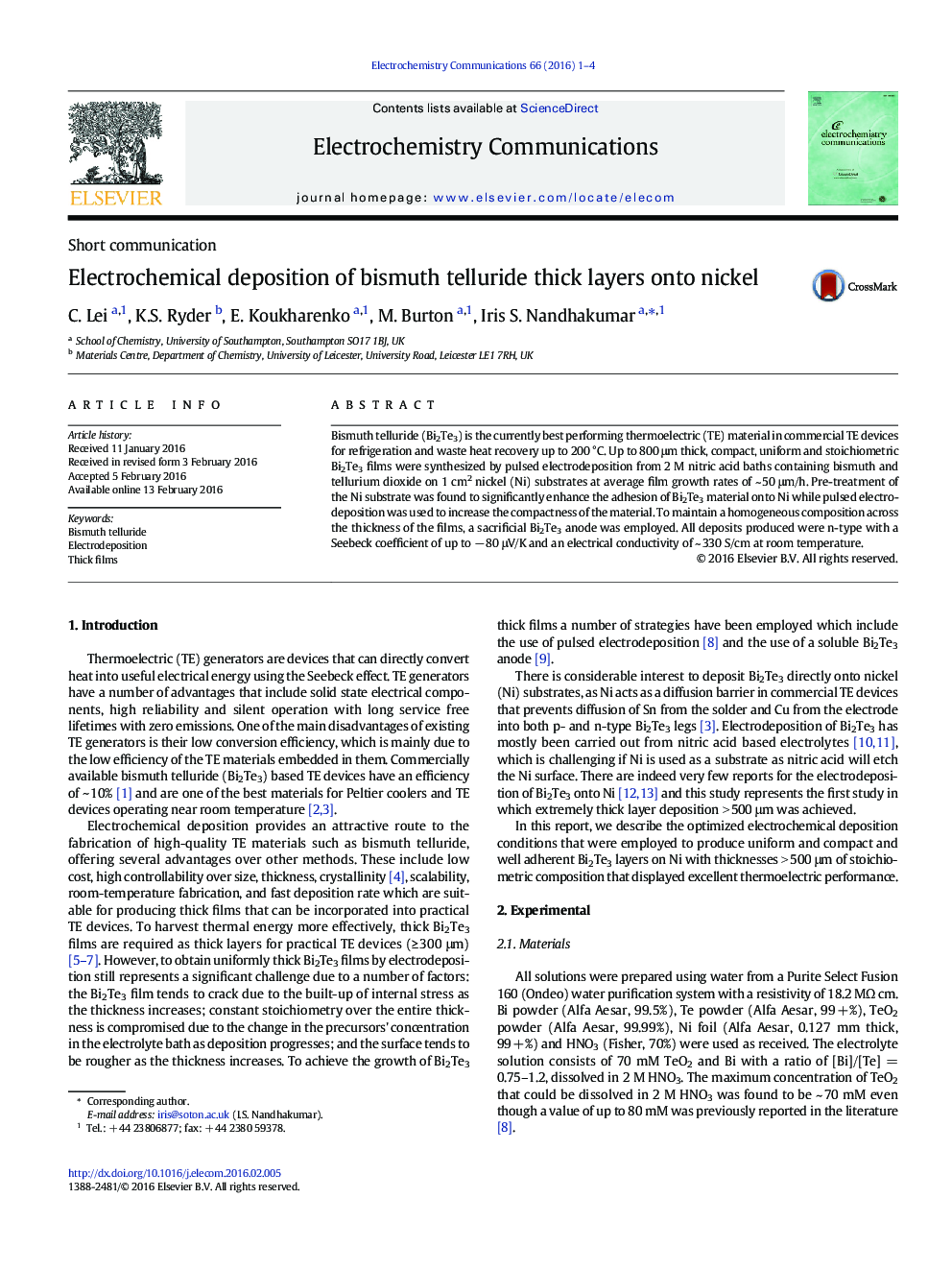| Article ID | Journal | Published Year | Pages | File Type |
|---|---|---|---|---|
| 178671 | Electrochemistry Communications | 2016 | 4 Pages |
•Bi2Te3 films were synthesized by pulsed electrodeposition on 1cm2 nickel at a deposition rate of ~ 50 μm/hour.•Film thicknesses of 800 microns were achieved on nickel with a homogenous and stoichiometric composition through the thickness of the material•All deposits produced were n-type with a Seebeck coefficient of up to -80 μV/K and an electrical conductivity of ~ 330 S cm-1 at room temperature.•First study that reports deposition of Bi2Te3 at these thicknesses onto nickel•Very important as nickel acts as a diffusion barrier in commercial TE devices which are based on bismuth telluride
Bismuth telluride (Bi2Te3) is the currently best performing thermoelectric (TE) material in commercial TE devices for refrigeration and waste heat recovery up to 200 °C. Up to 800 μm thick, compact, uniform and stoichiometric Bi2Te3 films were synthesized by pulsed electrodeposition from 2 M nitric acid baths containing bismuth and tellurium dioxide on 1 cm2 nickel (Ni) substrates at average film growth rates of ~ 50 μm/h. Pre-treatment of the Ni substrate was found to significantly enhance the adhesion of Bi2Te3 material onto Ni while pulsed electrodeposition was used to increase the compactness of the material. To maintain a homogeneous composition across the thickness of the films, a sacrificial Bi2Te3 anode was employed. All deposits produced were n-type with a Seebeck coefficient of up to − 80 μV/K and an electrical conductivity of ~ 330 S/cm at room temperature.
Graphical abstractFigure optionsDownload full-size imageDownload as PowerPoint slide
